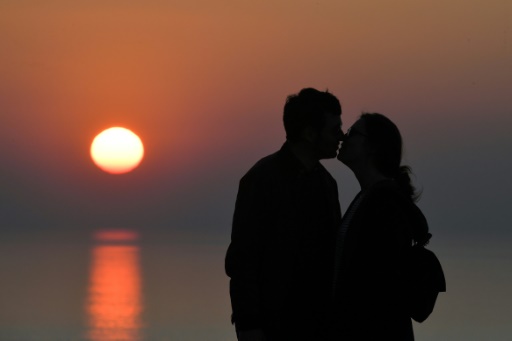First kisses may have helped spread cold sore virus
04 August, 2022

The modern strain of the virus that causes cold sores has been traced back to around 5,000 years ago, with researchers suggesting its spread could have been propelled by the emergence of kissing.
Around 3.7 billion people -- the majority of the world's population -- have a life-long infection of the HSV-1 virus behind facial herpes, according to the World Health Organization.
But despite its ubiquity, relatively little has been known about the history of this virus, or how it spread throughout the world.
So an international team of researchers screened the DNA of teeth in hundreds of people from ancient archaeological finds.
They found four people who had the virus when they died, then sequenced their genomes for research published in the journal Science Advances. "Using these reconstructed genomes, we were able to determine that the variations of modern strains all trace back to some time in the late Neolithic, early Bronze Age," said the study's co-senior author Christiana Scheib of Cambridge University. "This was a bit surprising because it has been assumed that herpes is something that has co-evolved with humans for a very long time," she told AFP.
She said that was still true: all primate species have a form of herpes and humans likely had a strain when they first left Africa.
But the research indicated that those earlier strains were replaced by the modern form around 5,000 years ago.
So what brought about that change? The researchers suggested two theories.
Around 5,000 years ago was a time of great migration from Eurasia into Europe, and that spread could have affected the virus.
The other theory? That was around the time when people starting romantically kissing each other.
"That is definitely one way to change the transferability of a herpes virus," Scheib said.
The virus is normally passed by a parent to their child, but kissing would have given it a whole new way to jump between hosts, she said.
"There is some textual evidence starting to show in the Bronze Age of kissing between romantic partners," Scheib said.
The researchers said the earliest known record of kissing was a manuscript from South Asia during the Bronze Age, suggesting the custom may have also migrated from Eurasia into Europe.
Kissing "is not a universal human trait," Scheib pointed out, emphasizing that it is difficult to trace exactly when it began -- or if it is definitively linked to the spread of HSV-1.
Around 2,000 years ago, the Roman Emperor Tiberius was believed to have attempted to ban kissing at official functions to prevent the spread of herpes.
Co-senior study author Charlotte Houldcroft, also from Cambridge, said that a virus like herpes evolves on a "far grander timescale" than COVID-19, which the world has watched mutate in a matter of months.
"Facial herpes hides in its host for life and only transmits through oral contact, so mutations occur slowly over centuries and millennia," she said.
"Previously, genetic data for herpes only went back to 1925," she added, calling for more "deep time investigations" of viruses.
"Only genetic samples that are hundreds or even thousands of years old will allow us to understand how DNA viruses such as herpes and monkeypox, as well as our own immune systems, are adapting in response to each other."
Source: japantoday.com
TAG(s):
